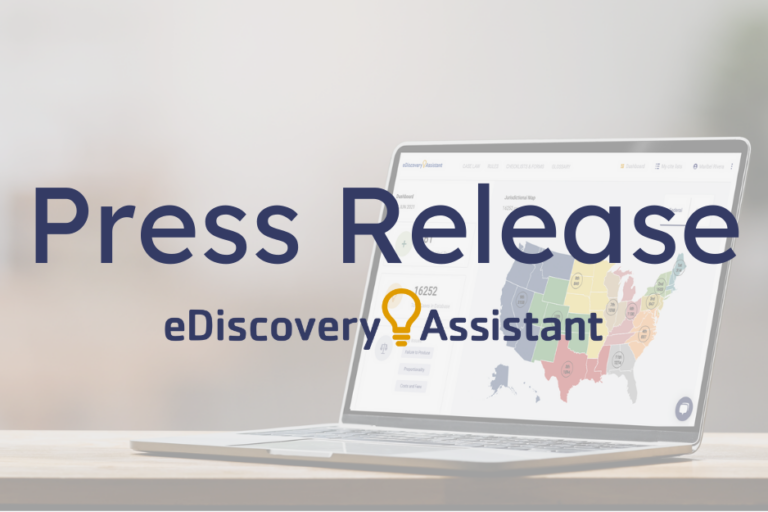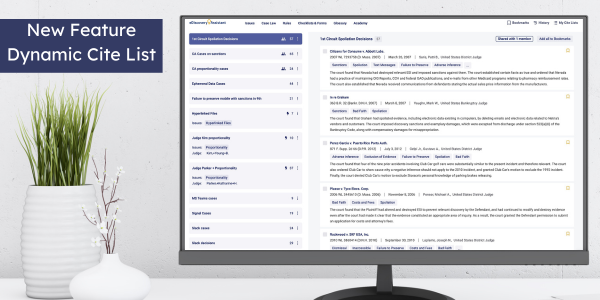The following is Part II in a multi-part series on issue spotting in ediscovery. Being able to identify the issues with existing and any potentially lost data early in your case allows you to understand risks and craft an appropriate strategy for dealing with your client’s data, and what you need to request from the other side and third parties. Each type of data has its own issues to consider, and this series will highlight some of those issues and how you should factor them into your discovery strategy for a matter. Part I in the series, How and When to Start covered understanding the big picture and creating a discovery strategy.
Ah, social media. It is both a blessing and a curse in ediscovery. A blessing because sometimes a party says something on social media or posts a picture that can make or break your case. But making sure you preserve, collect and authenticate that post, TikTok or tweet correctly will be what makes or breaks your ability to use the evidence at trial. Hence, the curse.
Social media raises a host of issues that you need to be aware of when gathering it as evidence in a case. And to do it right, you have to think through how you will want to present the evidence at trial down the road. “Oh there she goes again,” you’re thinking, “always talking about planning.” Yes, yes I am. You’ll thank me for it eventually.
I’ll start by giving you an easy example. Say the opposing party posted on Facebook about climbing a mountain when he is currently on disability for a back injury, and your client wants to use the post to show he’s not disabled. At trial, you plan to blow up that post and show the jury the party’s athletic prowess in getting to the top. Perhaps you’ll sprinkle in some facts about the altitude or the terrain to make it seem even more of a stretch that he’s disabled. Now, how do you preserve and collect that post? Your client doesn’t control it, so it can be deleted at any time, and you aren’t sure if grabbing a screenshot of the page on Facebook (assuming you have access to the account legally) will work.
Know What You Want
What you want is the post exactly as it appears on the social media platform. In our example, if you ask for a download of the user’s profile from Facebook, you’ll get a completely unusable collection of files with the photos separated from captions, and no comments. Do you want comments from the post? The date and time it was posted? The caption written by the user with the image? Then you can’t use the built in Facebook download. And that process applies for each social media platform. You need to know the ins and outs of each platform and what questions you need to answer to instruct whoever is doing the collection.
The question you have to ask is this: For each platform at issue, what needs to be captured and how will it be used at trial? Then segue into your next set of questions based on the platform — do you want date and time of posting? comments? What metadata should you capture? Analyze each feature of the platform and figure out what you need.
Understand the Preservation and Collection Process
As a general rule, I want to collect social media as soon as I know it’s at issue in the case. Content can be deleted or altered in just a few minutes, causing you to have spoliation issues if you have the preservation obligation, or you lose the opportunity to get the data if you don’t enforce getting data requested by RFP within the 30 day timeframe. Cases abound in which individuals and corporations made changes to social media that resulted in spoliation.
After timing, the next issue is what tool you use to collect your data. And to choose, you need to know what you want and that the tool you are using will collect each element of a post, tweet, etc. Again, this is about how you want to use the data. Talk to the person doing the collection and make sure they know what you need. During the 2020 Presidential election, most all of the social media platforms changed their APIs to prevent bots from posting. The result was to drastically alter the ability to collect data effectively in ediscovery, and tools are still working to get back to achieving complete captures with a good image.
Once your data is collected and loaded, QC it immediately. Verify the image is complete and without any issues, confirm the metadata you need is there and confirm you have each element of the post — comments, likes, date, time — whatever you need to display in the way you envision showing it to a jury. Waiting to QC your social media can be huge issue if you have to re-collect at a later date and the post has been altered or deleted.
Authentication
Whether you can authenticate social media for admission at trial depends on multiple factors, and you’ll need to evaluate them prior to collection to ensure you have what you need to establish the post comes from the account you say it’s from. In terms of a test for authenticating social media, there are multiple factors to be considered as enunciated in the frequently cited case Tienda v. State from the Texas Court of Appeals:
Along the way, the Maryland Court of Appeals recognized that such postings may readily be authenticated, explicitly identifying three non-exclusive methods. First, the proponent could present the testimony of a witness with knowledge; or, in other words, “ask the purported creator if she indeed created the profile and also if she added the posting in question.” . . . Second, the proponent could offer the results of an examination of the internet history or hard drive of the person who is claimed to have created the profile in question to determine whether that person’s personal computer was used to originate the evidence at issue. Or, third, the proponent could produce information that would link the profile to the alleged person from the appropriate employee of the social networking website corporation.
Authentication is easy when you collect from your client’s sites or opposing counsel agrees to authentication. But without that agreement, or when you are working with non-party data (i.e. tweets about a product made by consumers that a manufacturer wants to have admitted), you need to collect in a manner that allows the other side to verify authenticity of an account.
But what about screenshots? Many lawyers are collecting screenshots and hoping to use them at trial. The short answer is that you are more likely to lose the authentication battle with a screenshot UNLESS both parties agree to authentication. There are many situations in smaller cases where the parties agree to authentication and present that agreement to the court. You may also wish to include any such agreement in your ESI protocol, if you have one.
Takeaways
Social media is potentially abundant source of evidence and one that should be on your radar. Avoid the trap of just telling someone to collect it and forget it until trial. Instead, have a plan for how you’ll use social media evidence and plan for each stage of preservation, collection, authentication and presentation. You’ll avoid potential issues of having evidence excluded and have a more consistent, economical process that makes your client happy. Because that’s what matters.




